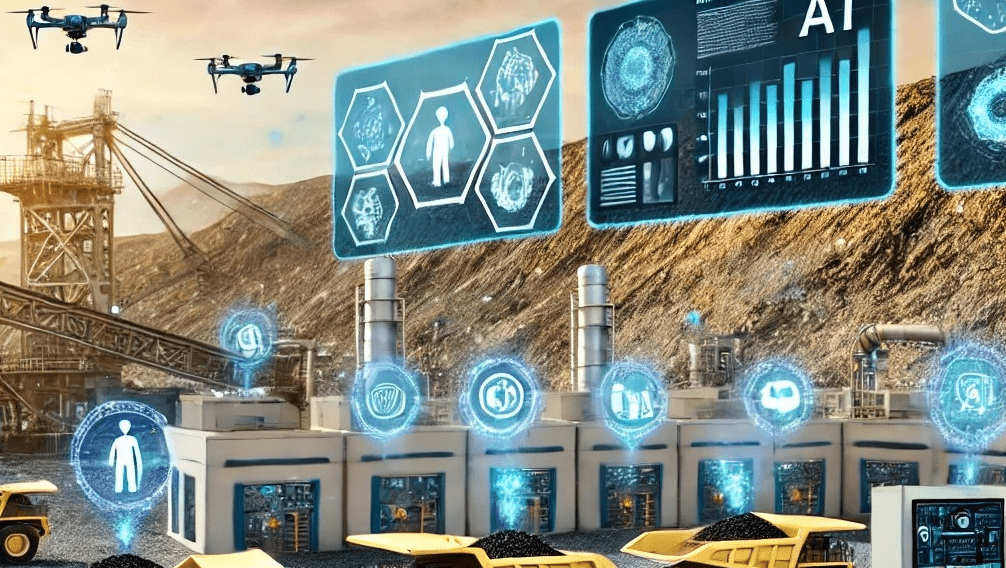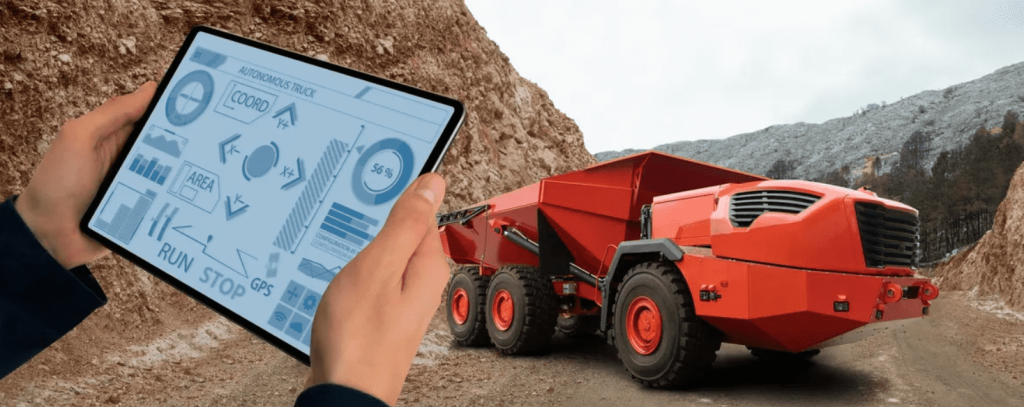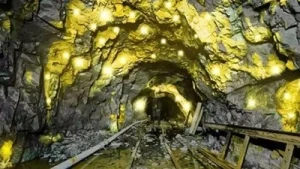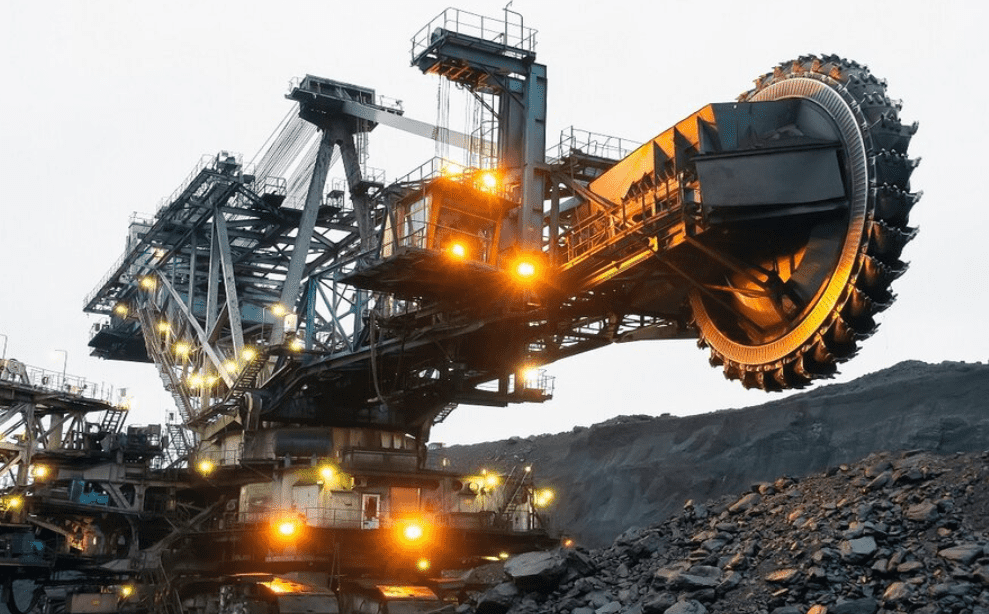One of the most remarkable impacts of AI in mining is its ability to enhance safety. Mining has historically been a hazardous profession, but AI is changing that. By analyzing vast amounts of data in real-time, AI can predict potential hazards and prevent accidents before they occur. It’s like having a sixth sense that keeps miners out of harm’s way. So how Is AI Transforming the Mining Industry?
Efficiency is another area where AI shines brightly. Mining operations involve complex processes, from exploration to extraction. AI algorithms can analyze geological data with incredible precision, helping companies pinpoint where to dig for resources more accurately and efficiently. This means fewer resources wasted and higher yields, akin to hitting a bullseye with every shot.
Environmental sustainability is a pressing issue for the mining industry, and AI offers innovative solutions here too. By optimizing energy consumption and reducing waste, AI helps miners operate more sustainably. It’s like teaching an old machine new tricks, making it more eco-friendly and less resource-intensive.
Moreover, AI is transforming decision-making processes in mining. With AI-powered analytics, companies can make data-driven decisions faster and with more confidence. It’s like having a crystal ball that predicts market trends and operational outcomes, giving mining companies a competitive edge in a volatile market.

Digging Deeper: AI’s Role in Revolutionizing Mining Efficiency
When it comes to extracting precious resources from deep within the earth, efficiency is the name of the game. In recent years, artificial intelligence (AI) has emerged as a game-changer in the mining industry, transforming how operations are conducted and optimizing every step of the process.
Imagine this: a massive mine, bustling with activity, yet operating with the precision of a finely tuned machine. This is the reality AI is creating. By harnessing the power of AI-driven analytics, mining companies can now analyze vast amounts of geological data in real-time. This means faster and more accurate decision-making, from identifying promising mineral deposits to planning the most efficient extraction methods.
AI’s ability to predict maintenance needs before equipment breaks down is another marvel. Just like how a skilled mechanic hears an engine’s subtle changes before a breakdown, AI algorithms can detect anomalies in machinery performance, preventing costly downtime and ensuring continuous operations.
But AI isn’t just about predictive analytics; it’s also about automation. Picture autonomous trucks hauling tons of ore across rugged terrain, guided by AI systems that navigate efficiently and safely. This not only boosts productivity but also enhances safety by reducing the risks associated with human error.
Moreover, AI is improving environmental sustainability in mining. By optimizing processes and reducing waste, AI-powered systems help minimize the industry’s ecological footprint. From monitoring water usage to managing energy consumption, AI enables smarter resource management, ensuring that mining operations are more sustainable for future generations.
AI is more than just a buzzword in the mining industry—it’s a transformative force. By enhancing efficiency, improving safety, and promoting sustainability, AI is paving the way for a new era of mining operations. As technology continues to evolve, so too will the ways in which AI revolutionizes the way we dig deep into the earth’s resources.

From Pit to Productivity: AI’s Impact on Mining Operations Unveiled
AI’s role in mining begins at the very core of operations: the extraction process. Traditional mining operations often rely on human expertise and manual labor to extract minerals from the earth. However, AI-powered machines equipped with sensors and algorithms can now autonomously navigate through complex underground environments, identifying valuable ore bodies with unprecedented accuracy. This not only increases efficiency but also minimizes the environmental impact by reducing unnecessary excavation.
Moreover, AI enhances safety in mining operations. The inherently hazardous nature of mining has long been a concern, with accidents posing risks to human lives and halting production. By deploying AI-driven systems for monitoring and predictive maintenance, mining companies can preemptively identify potential hazards and equipment failures, thus ensuring a safer working environment for miners.
In terms of productivity, AI algorithms are capable of analyzing vast amounts of data in real-time. This capability enables mining companies to optimize their processes—from logistics and supply chain management to resource allocation and energy consumption. By making data-driven decisions, companies can maximize output while minimizing costs, ultimately driving profitability and sustainability in the long run.
Furthermore, AI is not just limited to operational efficiency; it also plays a crucial role in sustainability practices. By optimizing extraction processes, AI helps reduce energy consumption and waste generation, making mining operations more environmentally friendly. This shift towards sustainable mining practices is increasingly becoming a priority for both companies and stakeholders alike.
The integration of AI into mining operations marks a significant leap forward in the industry’s evolution. From enhancing safety and efficiency to promoting sustainability, AI-driven technologies are reshaping the way resources are extracted and utilized. As we continue to unlock the potential of AI, the future of mining looks brighter than ever before, promising a harmonious balance between productivity, profitability, and environmental stewardship.
Smart Mines, Smarter Future: AI Innovations Redefining Extraction
AI, or artificial intelligence, has sparked a revolution in mining by enabling smarter exploration and extraction processes. Traditional methods often involved extensive drilling and sampling, which could be both costly and environmentally disruptive. However, AI algorithms can now analyze vast amounts of geological data with unprecedented accuracy. By crunching numbers and identifying patterns, AI helps pinpoint where valuable minerals are likely to be found, streamlining exploration efforts.
But the real magic happens underground. Smart mines equipped with AI can monitor operations in real-time, optimizing everything from ore extraction to transportation. Imagine a scenario where trucks autonomously navigate through tunnels, guided by AI to avoid obstacles and maximize efficiency. This isn’t science fiction—it’s the reality in some of the world’s most advanced mining operations today.
Safety is another major benefit. Mining has historically been one of the world’s most hazardous industries, with risks ranging from collapses to toxic gas leaks. AI-powered sensors can now detect potential dangers early on, allowing miners to evacuate before any harm is done. It’s like having a guardian angel watching over every shaft and tunnel, ready to alert at the first sign of trouble.
Moreover, AI doesn’t just stop at extraction. It also plays a crucial role in processing and refining minerals. Smart algorithms can optimize the use of chemicals and energy, reducing waste and environmental impact. This efficiency not only saves costs but also helps mining companies meet increasingly stringent regulatory standards.
AI innovations are indeed redefining the future of mining. They’re making operations smarter, safer, and more sustainable than ever before. As these technologies continue to evolve, one thing is clear: the days of brute-force mining are numbered. Welcome to the era of smart mines, where AI leads the way to a more efficient and responsible extraction of our planet’s resources.
AI’s Golden Touch: Transforming Safety Standards in Mining
 Imagine a world where the dangers of mining could be significantly reduced, where accidents are minimized, and safety is paramount. Thanks to Artificial Intelligence (AI), this futuristic vision is becoming a reality in the mining industry. AI is not just revolutionizing productivity and efficiency; it’s also making mines safer than ever before.
Imagine a world where the dangers of mining could be significantly reduced, where accidents are minimized, and safety is paramount. Thanks to Artificial Intelligence (AI), this futuristic vision is becoming a reality in the mining industry. AI is not just revolutionizing productivity and efficiency; it’s also making mines safer than ever before.
One of the most remarkable aspects of AI in mining is its ability to predict and prevent accidents. By analyzing vast amounts of data in real-time, AI systems can identify potential hazards before they escalate. For instance, AI-powered sensors can detect changes in the environment, such as unstable ground conditions or gas leaks, and alert personnel instantly. This proactive approach not only saves lives but also prevents costly disruptions to operations.
Moreover, AI enhances safety through its predictive maintenance capabilities. Mining equipment is prone to wear and tear, which can lead to unexpected breakdowns and safety hazards. AI algorithms can analyze equipment performance data to predict when maintenance is needed, allowing miners to address issues before they become critical. This predictive maintenance not only increases operational efficiency but also reduces the risk of accidents caused by equipment failures.
In addition to safety monitoring and maintenance, AI is transforming worker safety through advanced robotics. Autonomous vehicles and drones equipped with AI can navigate hazardous terrain and perform tasks that would otherwise endanger human lives. These robots can handle dangerous jobs like inspecting unstable tunnels or exploring areas with toxic gases, keeping miners out of harm’s way.
Furthermore, AI is improving safety training programs by providing realistic simulations and virtual reality experiences. Miners can now practice emergency procedures or learn to operate equipment in a safe, controlled environment. This hands-on training ensures that workers are well-prepared for potential dangers they may face on the job.
Overall, AI’s integration into the mining industry represents a monumental leap forward in safety standards. By harnessing the power of AI to predict hazards, maintain equipment, deploy robots, and enhance training, mining companies are creating safer workplaces and protecting their most valuable asset—their workers.

The Data Drill: How AI is Enhancing Decision-Making in Mining
AI has revolutionized data analysis in mining by leveraging vast amounts of data to uncover valuable insights that were previously hidden. Imagine AI as a supercharged data drill, delving deep into mountains of information to extract nuggets of actionable intelligence. Whether it’s predicting equipment maintenance needs based on operational data trends or optimizing mineral extraction processes for maximum efficiency, AI does it all with unparalleled accuracy.
One of the most awe-inspiring aspects of AI in mining is its ability to learn and adapt over time. Similar to how a seasoned geologist hones their intuition through years of experience, AI algorithms continuously refine their analytical capabilities through machine learning. This means that with each data point collected, AI becomes sharper at predicting outcomes and suggesting optimal courses of action.
But how exactly does AI enhance decision-making in mining operations? Picture this: a mine manager is faced with the challenge of scheduling maintenance for critical machinery. Traditionally, this decision might rely on historical maintenance logs and manual assessments. However, with AI, the manager can access predictive maintenance models that analyze real-time sensor data to forecast equipment failures before they occur. This proactive approach not only minimizes downtime but also reduces maintenance costs and improves overall operational efficiency.
Moreover, AI doesn’t just stop at predictive maintenance. It extends its capabilities to resource management, safety protocols, and environmental impact assessments. By processing vast amounts of geological data, AI helps geologists pinpoint potential mineral deposits with unprecedented accuracy, saving time and resources that would otherwise be spent on exploratory drilling.


